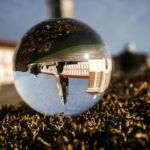Does Life Imitate Art? Or Vice Versa?
One of the things that seem strangely and suddenly important at 2am in the morning is that: Does life imitate art? Or does art imitate life? Or, do both imitate the other?…or – do neither imitate each other?
As Oscar Wilde once opined in his 1998 The Decay of Lying, “life imitates art far more than art imitates life.”
This is a philosophical movement of ‘anti-mimesis’ (disclaimer: ‘mimesis’, NOT ‘memes’), whereby proposing that art is made to resemble life. Indeed, broader conceptions of life (i.e., plants, animals, cosmos), would clearly suggest that art does imitate life. In simpler terms, this means art gravitates towards replicating scenes that can be witnessed in real life.
On the other hand, the former suggestion of life imitating art seems a plausible resolution as well. Within the confines of modern human existence, it seems that art actually frequently anticipates what is to come as well as articulate what has been – in other words – life actually, ipso facto, imitates art. This can be interpreted to mean that humans admire and look up to art unconsciously as a form of guidance.
However, what if the relationship between life and art is not causal? In other words, what about the possibility that the two only vaguely bear a mere association with each other – as opposed to direct effect?
That is to say – life and art is a cycle of both imitating the other to form and complete a circle. It therefore follows as a corollary that the Greek belief of ‘κύκλος’ is present here. The concept if ‘κύκλος’ can be best illustrated in how people spend their whole lives trying to attain true ideals (e.g. Beauty and Justice), but end up falling just short to procure these in pure form.















Post Comment
You must be logged in to post a comment.